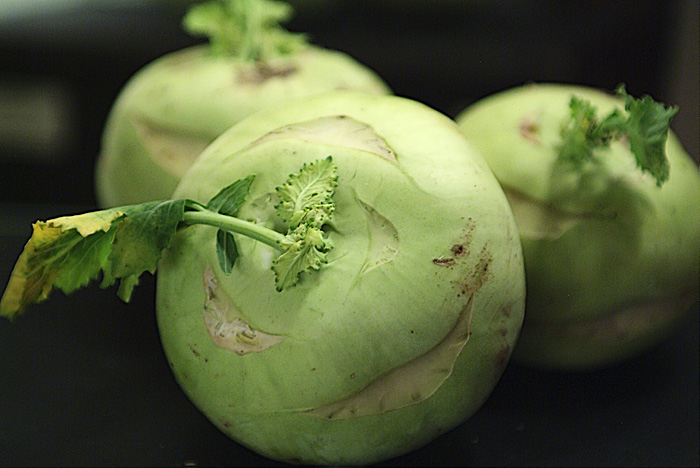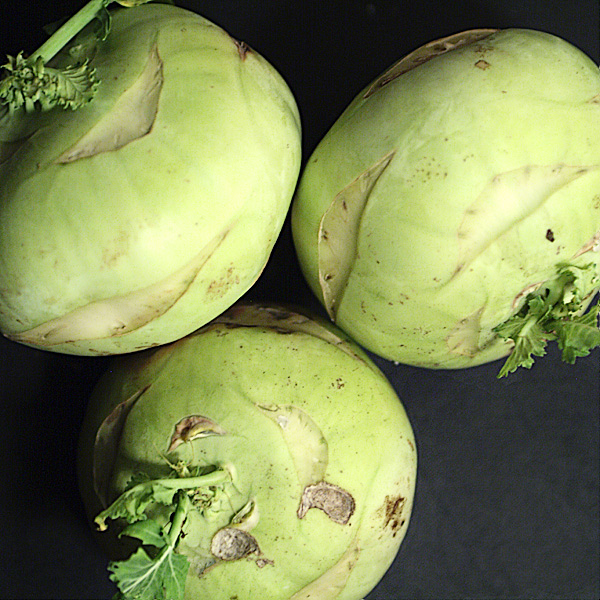
Over Christmas, as I first started suspecting that my life-long allergies might be related to gluten, I tried my hand at a loaf of artisan-style gluten free bread. The recipe, from Gluten Free Girl, got rave reviews from her readers, and the photos were mouthwatering. I assumed that, with all my past baking experience, there was almost no way I could go wrong.
But alas, no. I might be able to bake wheat bread with one hand tied behind my back, but gluten-free is a different beast all together. On my first attempt, I added enough water to make the dough resemble a normal wheat dough. Turns out that wasn't enough. I ended up with a whole-grain, artisal-style brick.
Not easily deterred, I tried again with a wetter dough. And it was an improvement - but not by much. I couldn't blame the recipe - just that something in my technique was totally amiss.
When I got back to Berlin, the local organic market happened to be clearing out their 2007 stock of gluten-free products. I happily picked up a loaf of cornbread and two boxes of gluten-free bread mix. I was particularly skeptical of these being any better than what I'd made from scratch, but for 50% off I had to try.
A few nights ago, with an evening free, I suddenly had the urge to bake again. I pulled out my packaged mix, dumped it in a bowl, and read the instructions. After pouring in exactly the amount of water called for on the back of the box, I found myself looking at a bowl of... goop.
This was not bread dough as I know it. If this is what gluten-free dough looks like, I thought, no wonder my instincts led me astray on my first two tries.
Bread dough should be a creamy, silky mass - like pulled taffy, lightly dusted with flour. This was a mass, yes, but more in the sense of glob.
"Kneading" a gluten-free bread is like squelching through mud in your bare feet. The thrill of watching the dough's metamorphosis from sticky to smooth is utterly missing. But I kept it up for the requisite 6 minutes, and put the bread in a warm spot to rise for the next hour.
60 minutes later, I was surprised to find that the dough had actually grown. The yeast was working! The wet, gloppy batter was soft enough to bubble and grow, even without the support of gluten. I left it for a second rising, put it in the oven and began, tentatively, to hope for a loaf of real bread.
The scent of warm yeast filled the apartment. After 60 minutes of longingly sniffing the air, I opened the oven door and peeked inside. A beautiful, golden-brown crust looked back at me. I pulled the loaf out and, unable to wait, cut a wedge straight from the pan. Blowing on it just long enough to avoid third-degree burns, I popped it in my mouth.
Buttery. Delicious. Fluffy, with just the right chewiness. I had baked bread again! It was all I could do to keep from devouring half the loaf right then. Somehow I refrained... until breakfast the following morning.
What was left after that, I shredded into breadcrumbs and froze. I had no particular plan for them, but only days later I found a cake recipe calling for breadcrumbs. More on that next week.
Now I'm determined to try for a gluten-free sourdough bread. And the dense, wholegrain Schwarzbrot that is so common here seems like it would lend itself perfectly to a gluten-free recipe. I have to order some different types of flour by mail, but I can't wait to get started.
Continue Reading!
30 January, 2008
I Have Hope Again
Labels: bread, gluten free
23 January, 2008
Turkish Market

Every Tuesday and Friday, I peer out my window and watch one of Berlin's more unusual cultural events unfold. The Maybachufer Market, which locals lovingly call the "Turkish Market," is like stepping into an open air bazaar in the heart of Istanbul.
Twice a week - come rain, shine, or snow - a whole city block is packed with stalls offering vegetables, fruit, fish, cheese, housewares, fabrics, and loaves of fluffy flatbread strewn with sesame seeds. Tourists and locals alike crowd together, the babble of voices blending with the sharp calls of touts hawking their wares. "3 Kilo, 1 Euro! Drei Kilo, ein Euro! Bitte schön, bitte schön, bitte schön!" they trill, thick accents harmoniously rolling the "r".
Sliced fruit samples lay waiting, as shoppers snack their way along. An incongruous mix of humanity bumps together along the cobblestones: devout Turkish grandmothers, draped in black robes and headscarves, drag their unwilling shopping dollies behind them; tourist clutch their bags as dreadlocked 20-somethings with skull-print leggings try impatiently to squeeze by.
This market is quintessentially Berlin, and all summer long I made a point of meandering my way through at least once a week. I frequently came away without a single carrot; the atmosphere and the texture of fabric bolts beneath my hands was enough to satisfy me.
This winter something has changed. The biting cold air sucks some of the festivity from the crowd. People aren't there to meander now. With breath freezing in the air and overflowing bags dangling heavily from chilled hands, we walk quickly, looking forward to the warmth of our apartments. But despite the cold, I head to the market nearly every week. And now I never come home empty handed.
This winter, walking along with my scarf snug around my neck and my hands shoved deep in my pockets, I discovered root vegetables. Not just the potatoes, yams, and carrots I'd known in southern California; but new, unfamiliar beasts of the vegetable kingdom. Something in the frigid air peaked my curiosity about the piles of knobby, dirt-encrusted celery root; glowingly-white daikon; and crisp, green kohlrabi that all so recently appeared in the market stalls.
I tried the kohlrabi first, with a bit of trepidation. I had no idea what I would do with it when I got it home. But for 30 cents a piece, I figured I couldn't go too wrong. I chose three friendly-looking specimens, placed a Euro in the gloved hand of the stall owner, and headed off with my prize.
A quick Google search later, and I realized I'd stumbled onto a horticultural gem. Kohlrabe (which is actually a stem, not a root as I'd first thought) is like a mad scientist's cross between a green apple and a baby potato. Left raw, it keeps its fruity characteristics; steamed, sautéed, creamed, or baked it shows more of its vegetable nature. I've tried most of these options by now. I can't get enough of it.
I've had it raw with slices of cheese. Shaved it paper thin and sautéed it with Parmesan. I've cut it into matchsticks, smothered it in spaghetti sauce,chopped it raw into tuna salad.
Tonight, it was oven-baked kohlrabi "fries".
Warm, flavorful, and delicious, they have the dense chewy goodness of a potato with none of the starchy sleepiness. And an average-size kohlrabi has twice as much Vitamin C as an orange! I can't wait to keep playing with these - I think kohlrabi hash browns with eggs is definitely on the menu this weekend.
Kohlrabi Oven Fries:
Use about 1 kohlrabi per serving.
1. Preheat the oven to 400 °F (200 °C)
2. Peel the tough green skin from the kohlrabi, and discard it.
3.Cut each kohlrabi in half, then slice about 1/8 in. thick. Place slices in a large bowl.
3. Sprinkle your "fries" lightly with olive oil, stirring until evenly coated. If you have an oil mister, this is a great time to use it.
4. Lay the slices in a single layer on a metal baking pan, and sprinkle with your favorite French fry seasonings. I used salt, pepper, garlic, and paprika.
5. Bake 15-20 min, until browned on top and soft all the way through.
Continue Reading!
Labels: gluten free, kohlrabi, recipe, sommersize, Turkish market, vegetables
